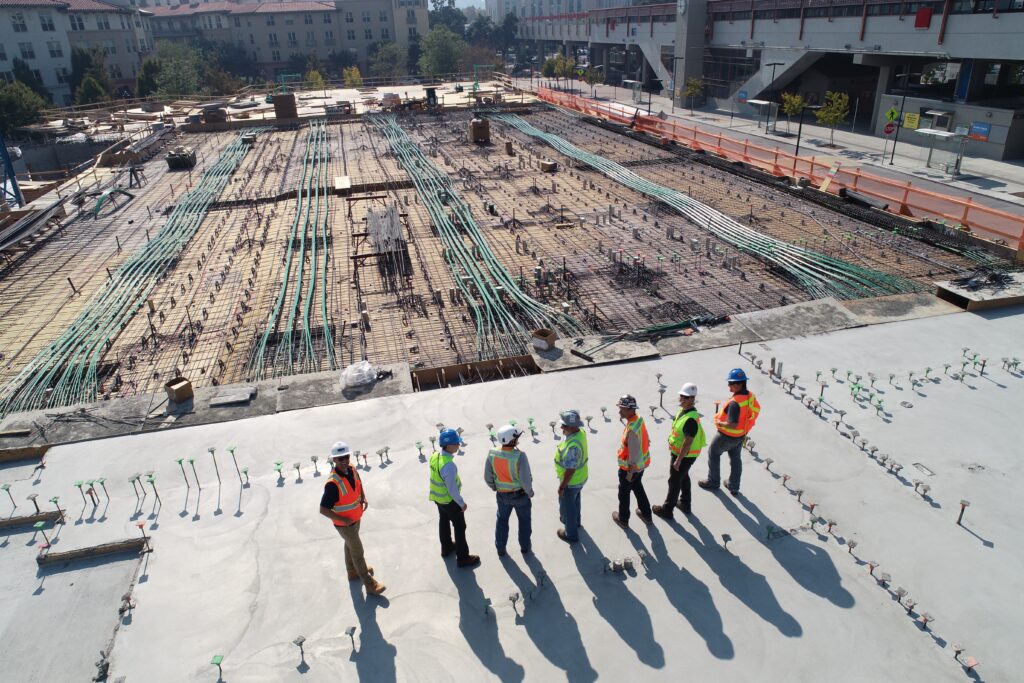The construction industry is one of the most hazardous industries in the world. According to the Health and Safety Executive (HSE), it accounted for the highest number of deaths among all the industries in 2022/23. Construction projects inherently carry substantial risks to safety and health. Employers and site managers have the legal duty to implement measures to ensure workers’ safety and well-being.

This blog discusses UK safety regulations and best practices to achieve compliance.
Safety Compliance in Construction
Safety compliance is adhering to safety rules set by regulators and legislators. It also extends to a mindset and commitment to incorporating safety into every activity.
Stringent safety regulations govern the construction industry in the UK to mitigate risks and prevent accidents. The HSE serves as the primary regulatory body, overseeing health and safety regulations and enforcing compliance within the construction sector.
Following safety protocols is crucial, as non-compliance can lead to accidents, project delays and legal repercussions.
Regulations and Legislations
All organisations operating within the construction sector in the UK are legally required to adhere to the following legislation:
- Construction (Design and Management) Regulations (CDM) 2015
CDM regulations are foundational in the UK’s construction sector. They focus on project planning, risk management and stakeholder collaboration across all project phases.
Everyone involved in the project, including clients, designers, contractors and workers, has duties under CDM to ensure health and safety.
Following are the key duty holders and their responsibilities as mandated by the CDM regulations:
Commercial Clients
- Appoint other duty holders as necessary
- Allocate sufficient time and resources for the project
- Ensure relevant information is prepared and provided to other duty holders
- Ensure that the principal designer and principal contractor fulfil their duties
Domestic Clients
- Typically, their client duties are transferred to the contractor for single-contractor projects or to the principal contractor for projects with more than one contractor
- Can opt for a written agreement with the principal designer to carry out client duties
Designers
- Identify, reduce, or control foreseeable risks during construction, maintenance, and use of the building
- Provide necessary information to help other project team members fulfil their duties
Principal Designers
- Plan, manage, monitor, and coordinate health and safety during the pre-construction phase
- Identify, eliminate, or control foreseeable risks
- Ensure designers fulfil their duties
- Provide relevant information to other duty holders
- Collaborate with the principal contractor for planning and coordination during the construction phase
Principal Contractors
- Plan, manage, monitor, and coordinate health and safety during the construction phase
- Liaise with the client and principal designer
- Prepare the construction phase plan
- Coordinate contractors
- Ensure site inductions, prevent unauthorised access and provide welfare facilities
- Engage workers in health and safety practices
Contractors
- Plan, manage and monitor construction work to minimise health and safety risks
- Coordinate activities with others in the project team, especially in multi-contractor projects
Workers
- Take care of their own and others’ health and safety
- Report potential hazards
- Cooperate with employers, fellow workers, contractors and other duty holders
- Health and Safety at Work etc. Act 1974
The Health and Safety at Work etc. Act 1974 imposes duties on employers, employees, suppliers and contractors to ensure a safe working environment.
Under this act, employers have the following responsibilities:
- Provide a safe system/way of performing work
- Provide a safe place to perform work in
- Provide safe equipment and machinery to perform the work
- Ensure duty holders/workers are competent to perform tasks safely
- Carry out relevant risk assessments
- Management of Health and Safety at Work Regulations 1999
The Management of Health and Safety at Work Regulations 1999 highlight specific requirements for managing health and safety in the workplace. They encompass risk assessments, health surveillance, and emergency procedures.
Under these regulations, employers have the following responsibilities:
- Conduct risk assessments in the workplace
- Identify significant health and safety risks
- Implement health surveillance based on identified risks
- Appoint competent individuals to assist in health and safety
- Provide adequate safety training to employees
- Establish and maintain emergency protocols
- Maintain the safety of equipment through regular inspections and upkeep
- Develop and update workplace-specific safety policies
Best Practices for Construction Safety Compliance
Here are some practices that can help achieve safety compliance:
- Risk Assessment and Management
Conduct comprehensive risk assessments at every stage of the project. Identify potential hazards and implement control measures to mitigate risks. Regularly review risk assessments to ensure they remain current and relevant.
- Provide Adequate Training
Ensure all personnel receive CDM Training and are aware of safety procedures. Conduct regular training sessions and provide ongoing education on safety practices to keep the workforce informed and prepared.
- Site Management and Supervision
Ensure clear communication, supervision, and coordination among all involved parties. Monitor all the work activities, enforce safety protocols and promptly address safety concerns.
- Regular Inspections and Audits
Conduct regular inspections and audits to identify potential hazards and ensure compliance with regulations. These allow corrective actions to be implemented promptly, preventing accidents and maintaining a safe working environment.
- Prioritise Health and Safety
Create a workplace culture where health and safety are important. Encourage active participation and commitment from all workforce levels in upholding and prioritising health and safety standards. Provide employees with health and safety courses to equip them with the knowledge they need to work safely.
Conclusion
Construction workers are one of the most hazardous occupations in the UK today. This level of risks is why employers need to ensure that effective health and safety management systems are in place to protect the well-being of the workers. Employers must adhere to regulations and adopt the practices discussed above to uphold the safety of their workforce.